Multi-lingual seagrass information posters launched
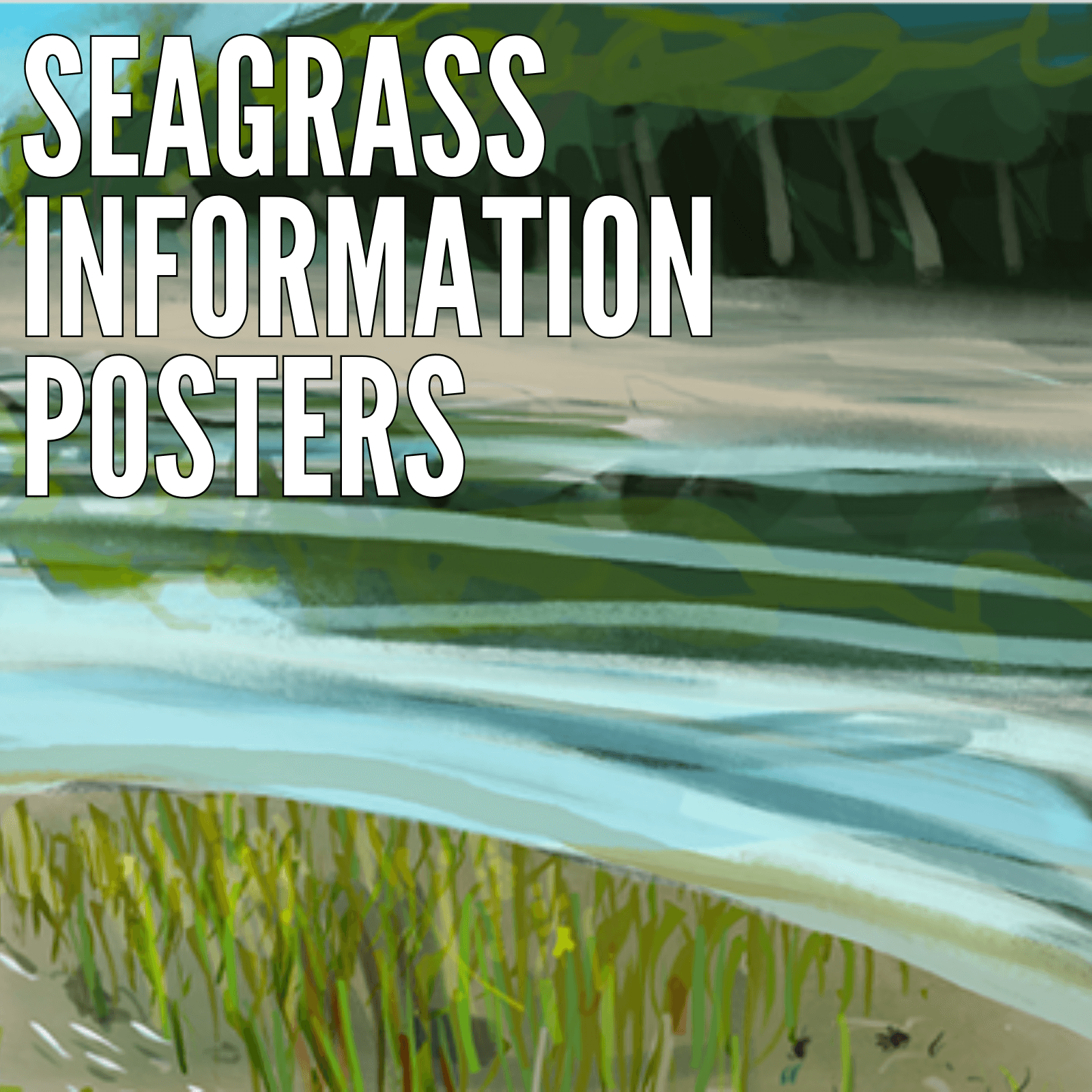
July 4, 2024 Content Team Seagrass meadows provide a range of environmental, economic, and social benefits to people and planet. They provide habitat, food, and shelter to thousands of species of fish, invertebrates, mammals, reptiles, and birds. Through their diverse use as fishing grounds, they support the creation of jobs and provide access to food sources like fish and invertebrates. Their leaves help to purify water, reducing pollutants like heavy metals and harmful bacteria. Seagrass meadows trap carbon within the seabed and, if left undisturbed, can store this for millennia. Their large and deep network of roots extend throughout the seabed helping to stabilise our coastlines. Seagrass Information Posters As part of a recent project, Project Seagrass has been working with Languages United and Green Standard Schools on the creation of multi-lingual seagrass information posters providing an insight into seagrass. The seagrass information posters are free to download from the Project Seagrass website and are available in the following languages: English, French, Spanish, German, Croatian, Greek, Italian, and Polish. The poster design was created by illustrator and science communicator Jack Cowley. The following Green Standard Schools supporting members were involved in the translation of the posters: French In Normandy, CLIC International House Sevilla, Humboldt-Institut, Scuola Leonardo da Vinci Milano, Κέντρο Ξένων Γλωσσών Βαρελά and Škola Jantar. Partners WHY SEAGRASS Discover why it is vital we save the world’s seagrass Explore More
The role of seagrass meadows in promoting Ocean Literacy
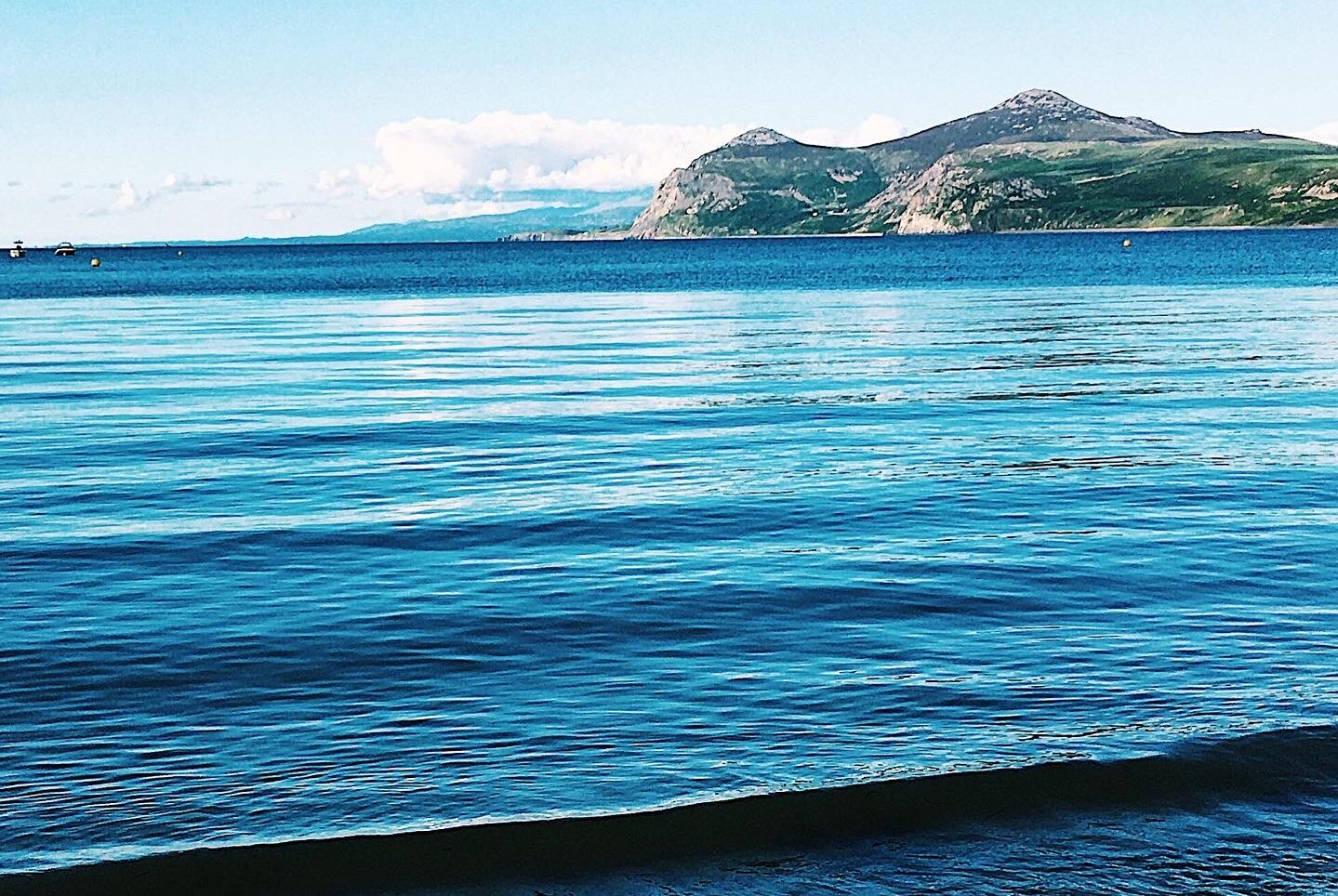
[vc_row type=”in_container” full_screen_row_position=”middle” scene_position=”center” text_color=”dark” text_align=”left” overlay_strength=”0.3″ shape_divider_position=”bottom” bg_image_animation=”none”][vc_column column_padding=”no-extra-padding” column_padding_position=”all” background_color_opacity=”1″ background_hover_color_opacity=”1″ column_link_target=”_self” column_shadow=”none” column_border_radius=”none” width=”1/1″ tablet_width_inherit=”default” tablet_text_alignment=”default” phone_text_alignment=”default” column_border_width=”none” column_border_style=”solid” bg_image_animation=”none”][vc_column_text]Ocean Literacy is defined as ‘an understanding of the ocean’s influence on us and our influence on the ocean.’ There are Seven Principles of Ocean Literacy: The Earth has one big ocean with many features. The ocean and the life in the ocean shape the features of Earth. The ocean is a major influence on weather and climate. The ocean made the Earth habitable. The ocean supports a great diversity of life and ecosystems. The ocean and humans are inextricably interconnected. The ocean is largely unexplored. According to the Marine Biological Association (MBA) these seven Ocean Literacy ‘Principles’ were developed by hundreds of educators and scientists in the USA as a guide to teaching about the Ocean. These principles are now being used as a framework in Europe to develop strategies towards the goal of an Ocean Literate society As stated by the UK’s MBA. “Few of us are aware of how important the sea is to human wellbeing: medically, economically, socially, politically and environmentally. Many of us are unaware of how day-to-day choices and actions can have a cumulative effect on the health of the ocean – a necessary resource that must be protected for life on our blue planet to exist.” The need for improved Ocean Literacy It has long been recognised that improving public awareness about how the ocean can benefit the environment, economy, and society is important (Peterson and Lubchenco 1997, Costanza, 1999). In 2004, a Pew Ocean Commission report identified a need to improve public literacy about oceans. The authors of the report assumed that by enhancing public awareness and knowledge of the oceans, and their influence on our lives, would lead to increased public support for ocean restoration efforts. The Pew Oceans Commission called for‘a new era of ocean literacy that links people to the marine environment’’ [2, p. 91]. The Commission further argues that there is a ‘‘need to provide the public with understandable information about the structure and functioning of coastal and marine ecosystems, how ecosystems affect daily lives, and how we affect ecosystems’’ [2, p. 11]. Since this report was published, low levels of ocean literacy have been, and are continuingly being identified in many countries. These low levels of literacy can be a barrier for citizens to engage in environmentally responsible behaviour or consider ocean-related careers (Guest et al., 2015). Seagrass meadows role in developing Ocean Literacy in the UK Seagrass meadows have a central role to play in developing ocean literacy in the UK. First, they are coastal habitats, readily accessible from the shore by wading or snorkelling and in some locations (i.e. Porthdinllaen in Wales, Lindisfarne National Nature Reserve in England, or Tyninghame in Scotland) they can be easily accessed without specialist equipment simply by walking out at low tide. In addition, there are already well publicised examples from the USA of where restoration of the same seagrass habitat (same species) has lead to rapid recovery of coastal ecosystem services (see Orth et al, 2020). This creates a cause of optimism that similar results could be achieved in the UK since much of the science now exists it just needs to be applied to UK waters. Finally, there are already existing, recognised and celebrated Seagrass Education and Awareness programs running in the UK both through Project Seagrass and the National Marine Aquarium’s ReMEDIES program. This is supported by an active academic literature for further developing this area (Roth and Reynolds, 2020). Conversations are already underway between Project Seagrass and the London Aquarium about a 5-year strategy that would incorporate a national seagrass engagement program and a potential collaboration with BIAZA network of aquariums which could act as community hubs for engaging people with monitoring, and then the potential restoration of their local meadows. References: Pew Oceans Commission. America’s living oceans: charting a course for sea change. A report to the nation. Arlington, VA: Pew Oceans Commission; 2003 144pp. Costanza R. The ecological, economic, and social importance of the oceans. Ecol Econ 1999;31(2):199–213. Peterson CH, Lubchenco J. Marine ecosystem services. In: Daily G, editor. Nature’s services: societal dependence on natural ecosystems. Washington, DC: Island Press; 1997177–94. Guest, H., Lotze, H.K. and Wallace, D., 2015. Youth and the sea: Ocean literacy in Nova Scotia, Canada. Marine Policy, 58, pp.98-107. https://www.mba.ac.uk/ocean-literacy Orth, R.J., Lefcheck, J.S., McGlathery, K.S., Aoki, L., Luckenbach, M.W., Moore, K.A., Oreska, M.P., Snyder, R., Wilcox, D.J. and Lusk, B., 2020. Restoration of seagrass habitat leads to rapid recovery of coastal ecosystem services. Science Advances, 6(41), p.eabc6434. Roth, J. and Reynolds, L.K., 2020. Engaging students in seagrass-focused activities. Science Activities, pp.1-10. [/vc_column_text][/vc_column][/vc_row]
Isadora Sinha on her Project Seagrass Experience
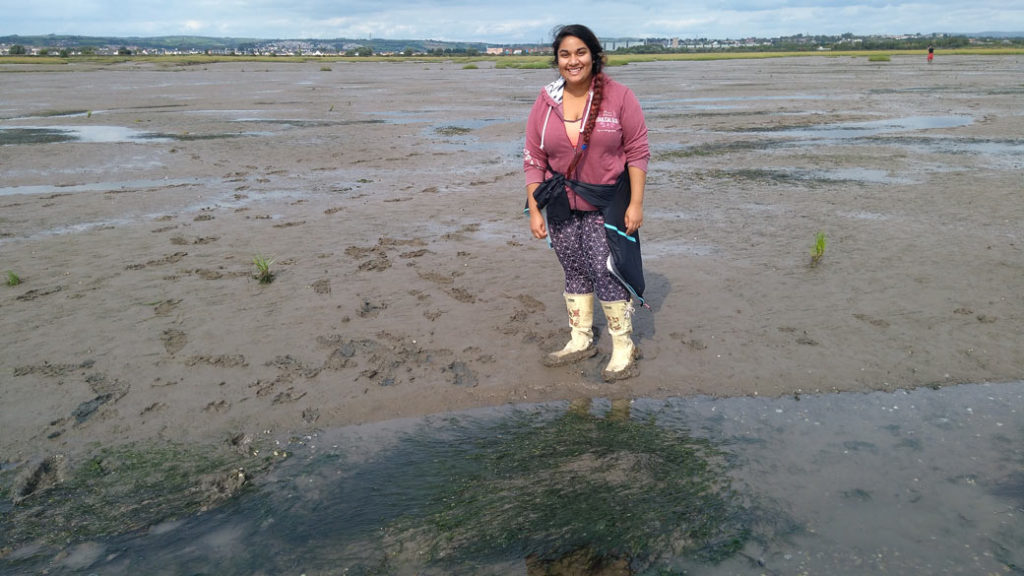
To give you a bit of an introduction, I am a Cardiff University Genetics (BSc) student going into my final year of my degree and have joined Project Seagrass for a Cardiff University Research Opportunities Programme (CUROP) summer research placement, at their offices in the Sustainable Places Research Institute. I stumbled upon Project Seagrass rather unexpectedly and had no idea what it was all about. Upon reading further into what seagrass is and the work Project Seagrass does, I was very keen on joining the team to learn more and take part. The Project Seagrass team are the nicest people I have worked with and maintain a lovely work environment where research and collaboration can flourish. When I first heard of the organisation, I did not know what seagrass was nor how important it is. Seagrasses are flowering plants that live in marine environments off the coast in shallow water. I know many people, including myself before this project, do not know the difference between seaweed and seagrass. Seagrass has roots, stems, leaves and flowers just like terrestrial plants do and holds some very important roles. I have learnt that seagrass is vital for: food security for coastal communities; fisheries; increasing water quality, reducing atmospheric carbon dioxide and as a food source for plant eaters like sea turtles! That is a long list of important roles which I had no clue about. This made me realise how seagrass is absent from public awareness. Rainforests get lots of publicity, yet seagrass, that can sequester carbon ~35 times more efficiently, somehow lacks it. Hopefully, in time that will change as more people realise that public awareness needs to be raised. Unfortunately due to several factors, seagrass is declining (if you want to learn about why, go to the Why Seagrass). This is catastrophic given the amount seagrass does for the marine environment as well as for us. Project Seagrass aims to push conversation efforts, educate the public and collect data on seagrass to the goal of restoring seagrass meadows to their former health and abundance. I am from a rather specialised degree, however, I found I quickly adapted to research here and am greatly enjoying it. Project Seagrass runs multidisciplinary projects which is why the collaborations are so exciting and surprising! My work itself is has been a mixed bag of literature reviews, data analysis, application development and learning lots about seagrass and citizen science. Seagrass is not sufficiently mapped due to the dynamic and vast nature of seagrass; it shrinks and grows with changing seasons and conditions. Plus, it is spread globally and is under water so it is often hard for scientists to fully monitor. This is where the use of citizen science could be a game changer. Citizen science is the participation of citizens in the collection of (usually ecological) data in collaboration with scientists. Citizen science is fantastic as it has the potential to increase data points by thousands compared to scientists collecting data alone, and it means more area is covered too. This Earth is shared by all of us so if people are passionate about conservation and want to help, citizen science is ideal. It gives individuals the chance to make a meaningful contribution to scientific knowledge as well as protect what they care about. In line with using citizen science to save seagrass, Project Seagrass has created a mobile application called SeagrassSpotter which is available on iOS and Android. SeagrassSpotter data is used to map seagrass. This is done as users report sightings of seagrass, whether it be while going kayaking or walking their dog on the beach. The report is logged in the form of a geographically tagged photo of the seagrass and is put publically on the SeagrassSpotter database so everyone can view it. Mapping seagrass is important so Project Seagrass has data that enables them to reinforce conservation action, petition for needed conservation policies, as well as make targeted actions in specific areas where more research is needed. This data would also help identify areas where seagrass has been declining and where it is still flourishing. My project concentrates on analysis of the demographics of current SeagrassSpotter users, which has never been investigated before. The demographics of users are of particular importance as we want to ensure that SeagrassSpotter is used by citizens of all ages and professions, not solely by researchers. If it turns out, participants are mainly researchers, then we need to think about how best to make SeagrassSpotter accessible and known to the wider public. If the results show that there are mainly young users, we need to find ways to make SeagrassSpotter more user friendly for the older generations. After analysing the results, I will generate applicable suggestions and improvements on how to increase citizen participation as well as ideas for technical application improvements. The demographic data is being obtained by means of a survey which was made in collaboration with, master’s student, Oliver Dalby. The survey has citizen participation motivation questions as the main portion which is what Oliver’s project focusses on. The demographic questions at the end of the survey is how the data I am analysing for my project is collected. I hope that my work will contribute to making SeagrassSpotter more widely used as well as add to the understanding the user-base of the application and what effect that has on data collection. This in turn would ideally lead to more users of the application, resulting in more data and more mapping of seagrass. The objective is to use this information to push for change to protect seagrass, subsequently saving wildlife and protecting communities. My time working on this project has opened my eyes to the importance of seagrass and its conservation. I have also learned new transferable skills as well as gained specific knowledge of citizen science. I can see the need for geneticists in seagrass research so who knows what could come of the future. I am happy to be here now and to
A Symphony For Scottish Seagrass
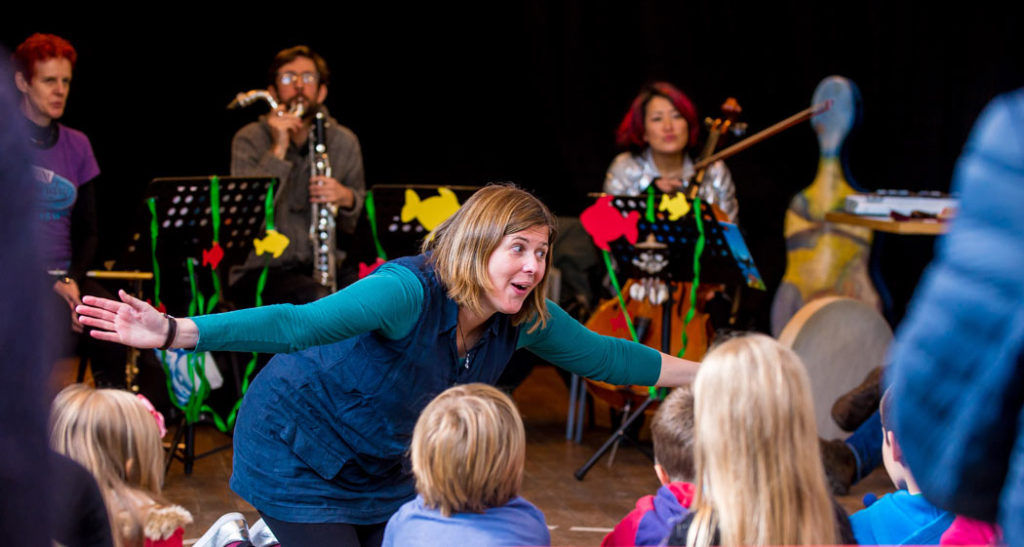
Hello Team Seagrass! I am Rufus, a volunteer with Project Seagrass and a marine biology graduate from the University of St Andrews. Since graduating in June 2017, I have begun working for the Scottish Chamber Orchestra’s Connect team and the University of St Andrews’ Music Centre. In this split position, I get to enjoy the benefits of working with extraordinary artists and musicians across the country to inspire babies, toddlers, children, students and adults to get more involved with the music in the community around them. There are so many educational opportunities provided by both the Scottish Chamber Orchestra and the University of St Andrews. Through its Connect programme, the Scottish Chamber Orchestra interacts with over 10,000 people each year through a vast array of activities. Both the staff and the musicians of the orchestra are extremely driven to reach new audiences all the time, not only to encourage interaction with music in the future but also, in some cases, to improve quality of life. There are so many educational opportunities that can be provided through music. Photo Credit – Fraser Band The Music Centre at the University St Andrews has also led some fantastic workshops throughout local schools in Fife with some of the excellent artists that come to the town to perform. One of the University’s initiatives that I have been involved in is Music Planet. This is a platform that promotes the combination of the arts with global environmental issues to enhance the power of the message that is conveyed, and also to engage new audiences. Music is a fundamental part of human culture, irrespective of where you come from or what your background is. There aren’t many people who don’t enjoy listening to some form of music, either when they are travelling, working, cooking, cleaning or as any other part of their day. I believe that because of this, music has the most potential in interdisciplinary education. Using music, and getting an audience to be involved with music and music making, will help to engage them with any subject. Music making can help children and adults to engage with any subject. Photo Credit – Fraser Band One of the easiest combinations that can be made is music and nature because, in nature, music is all around anyway. The natural soundscape has endless capabilities that can be tapped into to expand the possibilities of what you are teaching. In March, I will be co-leading a SCO workshop, with SCO violin Aisling O’Dea, for primary schools in Fife in conjunction with Project Seagrass and Music Planet from the University of St Andrews. A team of musicians from the orchestra and volunteers from Project Seagrass will provide a day workshop for pupils at primary schools centered around the children’s story, “The Snail and the Whale” by Julia Donaldson. This excellent book tells the story of a snail that seeks to see the world and journeys across the oceans on the tail of a humpback whale. In the end, it is an endearing story of community and self-worth. In March, I will be co-leading a SCO workshop, with SCO violin Aisling O’Dea, for primary schools in Fife in conjunction with Project Seagrass and Music Planet from the University of St Andrews. Photo Credit – Fraser Band The day will be centered around this story’s characters and the music that was written to accompany the story. Various activities throughout the day will involve the children in the scientific background behind important environmental issues whilst providing them the opportunity to get involved with the music making themselves. At this important tipping point, the future of the planet as we know it relies on the engagement of the public all over the world. Music can help to broaden the prospects of domestic and international education campaigns to make that change. Rufus If you would like to follow more of my activity, I have recently started a personal challenge and campaign to reduce my impact on the environment – #Green18. In my attempt to complete this challenge, I will write regular blog posts to document my success and any obstacles I have encountered along the way. Follow online @ www.green18.org Facebook @ www.facebook.com/GreenEighteen/ Instagram @ www.instagram.com/_green_18/ Twitter @ www.twitter.com/_Green_18 You can find out more about the Scottish Chamber Orchestra or music in St Andrews below: Follow online: st-andrews.ac.uk/music/ sco.org.uk Like on Facebook: www.facebook.com/scottishchamberorchestra/ www.facebook.com/UniversityofStAndrewsMusicCentre/ Follow on Twitter: @SCOmusic @StAndrewsMusic
Blue Planet, Green Seas. What’s the take home message?
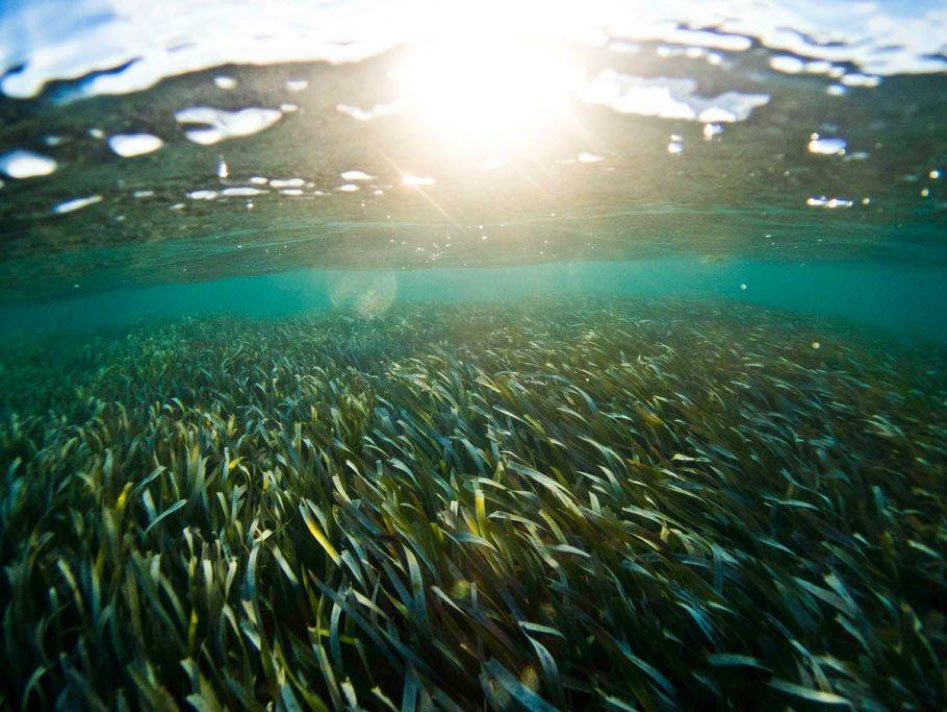
This weekend we are in for a treat as the BBC Blue Planet team broadcast episode 5 “Green Seas” for the first time (Sunday 26th November, BBC One, 8pm – don’t miss it!). The episode will reveal amazing footage of charismatic animals such as the Weedy Sea Dragon, the Green Sea Turtle and the Tiger Shark. These are just a few of the enigmatic species we associate with seagrass meadows, and all of these species are showcased in this episode! It’s now been over a year since we hosted the 12th International Seagrass Biology Workshop in Wales and it got me thinking about how far we’ve come with raising the profile of seagrass meadows… but just how far we’ve yet to go… and what we should be the ‘take home’ messages we are aiming to communicate ahead of the 13th International Seagrass Biology Workshop in Singapore next year? I love to read the new science which seems to be being generated almost weekly at the moment by #TeamSeagrass! Personally, I am back in a secondary school classroom these days, and so don’t have the time I used too, but if I had the capacity to go, I would certainly have been at CERF 2017 this month which is took place in Providence, Rhode Island. From my perspective both CERF 2015 in Portland, Oregon and CERF 2013 in San Diego, California were excellent conferences. They were particularly good for catching up with colleagues from around the world and getting a sneak peek into seagrass science coming hot off the press. If you are not already, I’d get following @CERFScience on Twitter ahead of CERF 2019 in Mobile, Alabama. This month we also witnessed the big UN Climate Change Conference “COP23” in Bonn, Germany. This conference marks the next step for governments to implement the Paris Climate Change Agreement and accelerate the transformation to sustainable, resilient and climate-safe development. The Climate Conference was reported as a ‘Launch-pad for higher ambition’ but as with all international agreements, it’s a case of walking the walk, not just talking the talk. Finally, next Monday I’ll be attending The World Forum on Natural Capital hosted by the Scottish Wildlife Trust in Edinburgh. Early this year I wrote a guest blog for the trust which explains the importance of seagrass habitat, and how people can help by submitting records through Seagrass Spotter. I also wrote another guest blog for ScotLINK which focussed on the value of seagrass meadows as Natural Capital. All this activity has got me thinking once again about how we best communicate seagrass meadows. At Project Seagrass we’ve tried a variety of educational tools, including colouring in books, nursery rhymes, school workshops and videos to name just a few. However, as I’m now back in the classroom and teaching young biology students (11-18 years old), I have had to re-evaluate some of the language I’ve got accustomed to using on a day to day basis, especially amongst my academic colleagues. I’m essentially stripping seagrass science back to the VERY basics. For several years now my ‘elevator pitch’ for seagrass has been based around 3 topics; 1) Fisheries and Food Security (seagrass meadows are a nursery habitat for many important food fish species) 2) Blue Carbon (seagrass meadows are a mega carbon sink) 3) Green Barriers (seagrass meadows protect our coastlines from wave energy). But how do you pitch that to an 11-year-old? And is that what I should be focussing on? Learning to communicate seagrass science at every level is something that we should all aim to improve in, but I also think it’s especially important for us to all be ‘singing from the same hymn sheet’. If the first challenge was in getting seagrass as a ‘thing’ into the public consciousness, the next step is surely explaining why it is so damn important! Learning to communicate these three concepts is my current seagrass science communication challenge and so if anyone has got any ideas or resources to help with this, then I’m all ears! Cheers RJ
Festivals of Seagrass: Cause for Ocean Optimism!
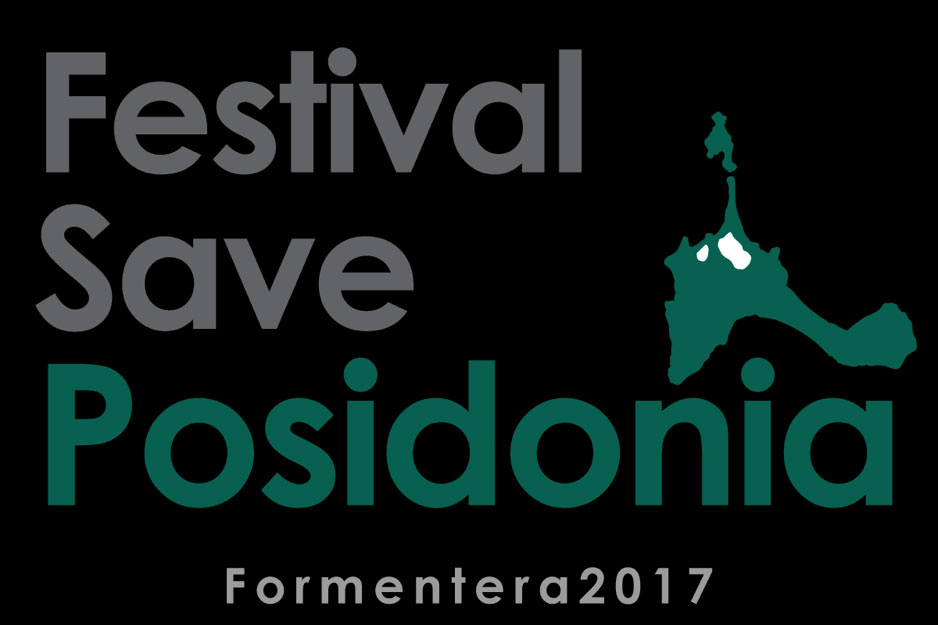
Over the next few days the Save Posidonia Project, Formentera celebrates the Save Posidonia Festival. The idea behind the project is to host a festival where culture, sport and environmental activities will be carried out that celebrate the fantastic contribution that the seagrass Posidonia oceanica makes to Mediterranean well-being. The festival is aimed both at marine professionals, as well as the public, and hopes to champion sustainability, so that it is not just an act or one off event, but becomes a permanent way of being. Outputs from the festival are concrete, with the most innovative scientific and environmental projects presented at the festival (linked to the preservation of Posidonia oceanica) having the opportunity to be financed through a collection made during by Save Posidonia Project. The projects are to be evaluated by a technical committee of high national and international recognition and the objective is to involve all individuals, companies and national or international organisations in raising awareness to take action in the conservation of such a critical ecosystem to the Balearic Islands. To participate in the festival all events must apply sustainability measures based on basic principles. Before the celebration of the event the promoters featured had to submit a plan to reduce the impact on the environment and respect the well-being of local people. However, this isn’t the first festival of this kind, indeed the Posidonia Festival has been active in the Mediterranean for nearly 10 years. Originating in 2008 on the island of Formentera (Spain), the festival has been hosted fifteen times in six different locations (Carloforte, Formentera, Mallorca, Santa Margherita Ligure, Sitges, Tavolara). Most recently Posidonia Festival was held in Mallorca with Three days of activities on Art, Nature and Sustainable Tourism have been held in Palma and Deià. The event will be held again next year. As an International Ecofestival of Art, Environment and Sustainable Development. The festival is a space for dissemination of knowledge and practices that promote the protection of the natural coastal environment and, at the same time, an opportunity for sustainable development, culture and tourism. For us seeing these ‘festivals of seagrass’ taking place is incredibly positive, since it is through platforms such as this that we are able to communicate seagrass science to the public! We’ve already heard this year about how seagrass science is growing, and I have witnessed first-hand the dedication and enthusiasm of this small (but growing!) group of seagrass scientists during the 12th International Seagrass Biology Workshop that Project Seagrass hosted in north Wales last year. Also, for me personally, I am thrilled to see the spotlight on the seagrass Posidonia oceanica since this species is critical to the sustainable provision of seafood in the Greek islands where I have made many friends. I find it deeply upsetting to witness the ecological, social and economic ramifications of degraded Posidonia oceanica meadows. The species has been estimated to be worth €190 million per year to Mediterranean fishing and the loss of this foundation species could result in both a loss of income and food security that these islands have long enjoyed. Keep up the good work #TeamSeagrass and together we will be the change.
Round The Pier Day. A weekend with Scottish Wildlife Trusts in the Wester Ross Marine Protected Area.
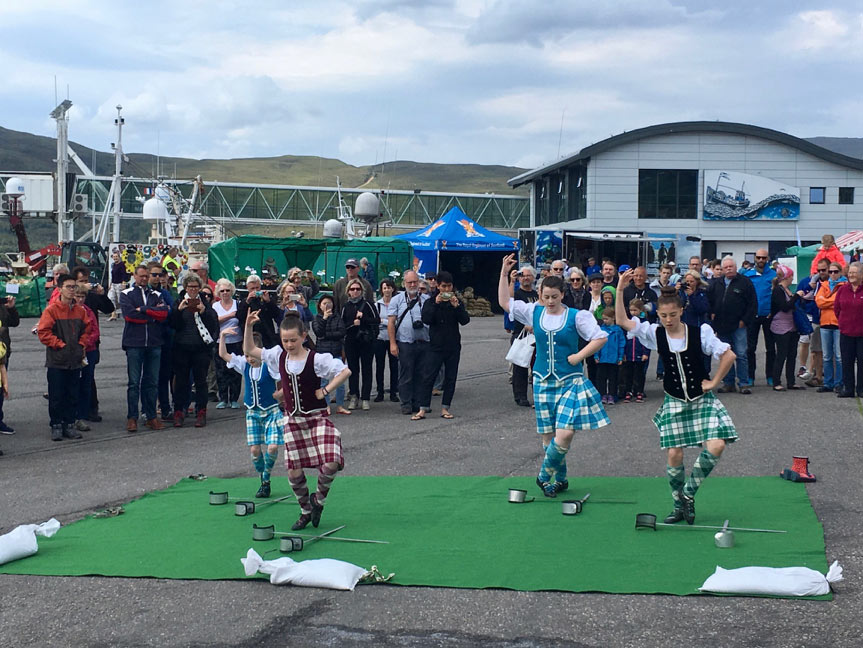
Last weekend on July 22nd, Ullapool Rotary Club put on yet another wonderful “Round The Pier Day” and Project Seagrass were invited by the Scottish Wildlife Trusts, who, thanks to Ullapool Harbour Trust and staff, have been featuring a ‘Wildlife Marquee’ as be part of the day. We were thus able to join Hebridean Whale and Dolphin Trust (HWDT), Whale and Dolphin Conservation (WDC), Marine Conservation Society (MCSUK), RSPB Scotland and Capturing our Coast in the Wildlife Marquee. It was a super day with 1728 visitors coming onto the Pier to enjoy the festivities throughout the day! In Scotland Project Seagrass have been working alongside Scottish Wildlife Trusts to raise awareness of Eelgrass (Zostera marina) which is one of the trusts ‘priority species’. In April 2016 it was hoped that our move to Scotland would herald ‘A New Dawn For Scottish Seagrass’ and we spoke then of our ambition to engage with Scotland’s coastal communities and begin the much needed process of mapping Scotland’s seagrass meadows. Community events such as this are the ‘bread and butter’ of that vision. They are also some of the best craic you can have! Our ambition for ‘Seagrass meadows to be saved around Scottish coasts’ has to start with people, and raising awareness of this most productive of coastal ecosystems. Having the opportunity to talk with folk about what seagrass is, where it is found and how we can map it is central to our strategy of raising awareness amongst the public. The Scottish Wildlife Trusts ‘Wildlife Marquee’ was a fantastic platform for engaging with people both from the local community, and those visiting the area. On a personal note it was brilliant to see the ‘Have You Got The Bottle?’ campaign present in the tent. The organisation is campaigning for a Scottish Deposit Return System for drinks packaging (Basically you would pay a small deposit when you buy cans and bottles and get it back when they are returned. Easy.) As someone who wants to reduce litter entering our marine ecosystems then this seems to me like a super solution to a huge problem! Anyways, back to the seagrass! When we arrived in Scotland we wanted develop and network of like minded individuals who could help volunteer their time and energy towards our common goal. This is the Scottish Seagrass Network. This weekend SJ (of the “ThreeBeforeThirty” blog posts) and Lauren (our West of Scotland rep) joined me in Ullapool to help deliver the SEA education (Seagrass, Education and Awareness) on the Saturday and explore the Marine Protected Area on the Sunday. By land and by sea the Wester Ross Marine Protected Area is simply stunning! First, we explored Loch Broom and the Summer Isles (towards the North-East of the MPA) and then afterwards Little Loch Broom, Gruinard Bay and Loch Ewe (towards the centre and South-West of the MPA). In Gruinard Bay there is a known seagrass meadow which forms part of the Scottish Wildlife Trusts North-West Highlands Snorkel Trail which has nine sites along the north west highlands coast around Ullapool, and recently a further six sites on the Isle of Harris. The Summer Isles are home to seals, seabirds and the majestic White-tailed eagle. If anyone is interested in assisting Project Seagrass in mapping the extent of seagrass distribution around these trails then please upload your photos via our Seagrass Spotter app and if you would like to find out more information about Scotland’s Seagrass Meadows then check out the Scottish Wildlife Trusts website. Slàinte RJ
Year FOUR of Project Seagrass!
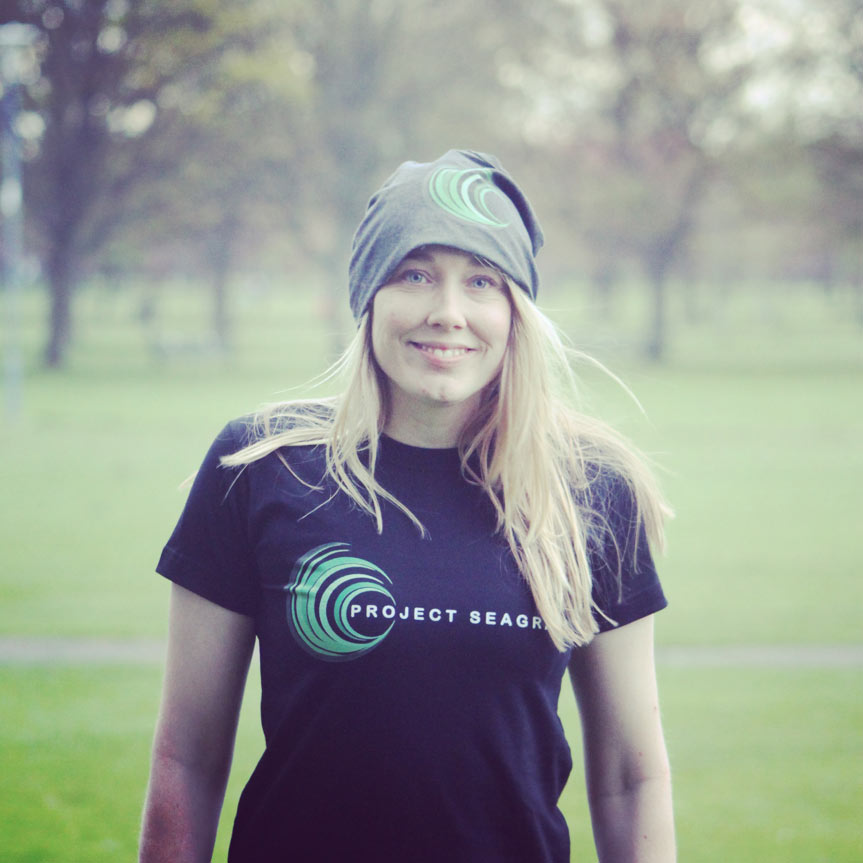
So that’s 4 years, 1460 days, 35,040 hours, 2,120,400 minutes or 12,614,400 seconds of seagrass! 2016/2017 has been our biggest 12 months to date, with our hosting of the 12th International Seagrass Biology Workshop at Nant Gwrtheyrn the obvious highlight. But that’s not all we’ve been up to this year. Since our ‘3 years of Project Seagrass’ blog last July, we’ve enjoyed making marine science matter at IMCC4 last August, right up to outreach at Ullapool Pier Day (blog to follow) just this last week. This blog is thus a celebration, and a review, of our 4th year as an officially seagrass focused entity! 2016 August So first up, and in a break from our usual seagrass focus, myself and Edd Hind-Ozan were involved in an innovative project with “Oceans Online” at IMCC4. The idea was to run a workshop which focussed on “Bringing fishermen to the table” at academic conferences. The aim was to achieve this using live stream “Bambuser” technology. Whilst this is a simple concept, I believe it is one that is long overdue. At marine conservation focused conferences and workshops, the importance of stakeholders is discussed frequently, whether it’s from developing solutions for community led MPA’s or improving fishing quotas – but the stakeholders are all to frequently absent from these high-level discussions. Oceans Online marked a pretty important development in making conferences accessible to all, especially considering a lot of commercial fishermen (from both developed and developing countries) cannot attend conferences because they are fishing! It was a privilege to be part of the beginning of a movement that looks to cultivate the ways marine science is conducted, shared and communicated online. Oceans Online will be returning on the 29th June 2018 for IMCC5 in Malaysia – so save the date! Next up in August was the development of Scottish Seagrass Network and the official registration of Project Seagrass as a charitable entity in Scotland. As we entered our fourth year as an NGO, we thought this was a logical step for us, especially since within north-west Europe, approximately 20% of seagrass meadows are found within Scottish waters. Within north-west Europe roughly 1/5th of seagrass meadows are found in Scottish waters. September In September myself and SJ managed to get over to the Scottish Association for Marine Science (SAMS) in Oban for some ‘Seagrass Spotter’ citizen science. The site we went seagrass spotting was Dunstaffnage Bay at the entrance to Loch Etive on the West Coast of Scotland. Beyond the eelgrass meadow already known to SAMS there was not much to report. Meanwhile, in Swansea, Wales the team from HQ in Cardiff were busy running a Seagrass Education and Awareness stand at the British Science Festival. The festival’s began in 1831 in York, England and have run through to this festival in Swansea which marked the 177th meeting of the British Science Association. Project Seagrass at the British Science Festival in Swansea, Wales. October This month was clearly ‘the big one’ in our calendar, and what a brilliant event the 12th International Seagrass Biology Workshop turned out to be. Our intern Evelyn Furness remarked on just how friendly “Team Seagrass” turned out to be and I think all delegates were impressed at both the diversity and quality of seagrass science that is now taking place globally. I’m sure that ISBW13 in Singapore will be an absolute cracker of a conference! The 12th International Seagrass Biology Workshop was held at Nant Gwrtheyrn, Wales. November You’d be forgiven for thinking that November would be a prime opportunity to take our foot off the gas after the efforts that went into hosting ISBW12, but conversely, we were really keen to build on the momentum and enthusiasm generated at ISBW12, especially the passion shown for our smartphone app Seagrass Spotter. For this reason, we put all our efforts this month into ensuring that Seagrass Spotter was developed and enhanced from being a smartphone application that was only available in the British Isles, to one that was functional across Europe, and in particular, that it be made accessible to as many delegates as possible from across the Mediterranean region. Seagrass spotter was made available to users in the Mediterranean Sea November was also the month that SJ announced she would be running “Three marathons before I turn 30” in a bid to raise vital funds for Project Seagrass. December Building on our traditional Christmas advent calendar, this year we created a “virtual” calendar for you all to enjoy. Behind each door of our calendar is one of #SantasSeagrassSecrets introducing you to the weird and wonderful uses and functions of seagrasses across the world. 2017 January The new year started with a reason to celebrate! Participation in SeagrassSpotter had rocketed since its expansion and we now had over 400 seagrass sightings from across the North Atlantic Ocean and Mediterranean Sea! What’s more, we had the good news that Andrew Lewin was keen to support Team Seagrass on his Speak Up For Blue website, with each of the plenaries from ISBW12 to be shared from his website. The first of these was Ocean Optimism on the Future of Seagrass Meadows on January 3rd but he continued to share one plenary / blog combo through until March (Check them out at www.speakupforblue.com). Each January I also take the time to head down to the BETT show as I seek inspiration for the best ways for us to improve on our SEA (Seagrass, Education and Awareness) programme. Towards the end of the month, Ben attended a meeting in Bangkok, Thailand, to discuss the final developments to “The Dugong & Seagrass Research Toolkit”, which we’ll discuss later. Richard headed to Puerto Rico, where he led the Swansea University Tropical Marine Ecology field course. Here he used the opportunity to test the capabilities of Seagrass Spotter in a tropical environment and paved the way for scientific seagrass spotting by conducting the activity along transects. February In February we were out and about in Cardiff talking all things seagrass at Cardiff University’s “Speak Week” March March is Seagrass Awareness Month and so a busy time of year for anyone involved in seagrass science and communication! This month Ben headed to Mexico as part of a ‘Land 2 Coast’ project with Cardiff University. Here
The Edinburgh International Science Festival
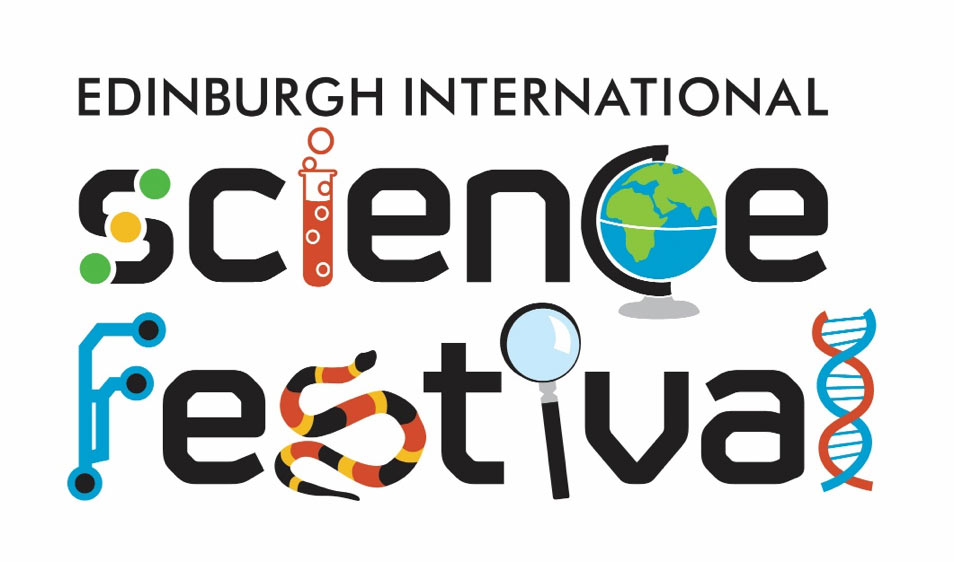
Edinburgh Science Festival Bubbles and enthusiasm took over for Project Seagrass as we set up our stall at Edinburgh International Science Festival last week. The festival has taken over the city for two weeks every year since 1989, and was the world’s first public celebration of science, definitely something that we’re proud to have been involved with. The festival covers everything you could imagine- from the science behind which biscuit is the best tea dunker (rich tea was the winner) to trying your hand at programming a rescue robot! The seagrass meadow filled with many different colours and species! Our very own seagrass meadow was in pride of place in the middle of Summerhall, with a colouring station close by. We had all ages colouring in creatures to live amongst the seagrass, resulting in one of the brightest meadows I’ve seen. Colouring station with lots of creatures and ID guides to get inspired by. It was great to see how eager the kids were to learn and see more- they were fascinated by clips of cuttlefish swimming through the grass and loved hearing about our research. They also had the chance to dress up as a seagrass scientist – tiny tots wearing masks that covered their whole faces and trying to walk in fins that were bigger than the kids themselves. RJ sharing some of his seagrass experiences. The enthusiasm we got from the kids was reflected in the stalls around us, their cracking activities seemed to have permanent queues of public wanting to get involved with things like bee anthropology, the British Heart Foundation and speech and language research. The buzz that came from being part of such a successful event was felt by all the seagrass team so a huge thank you to those who put in so much hard work to make the festival happen and for letting us be a part of it! ( A big THANK YOU to Evie Furness, Rufus Sullivan, Laura Coomber, Lauren Skye Clayton, Dani Whitlock and Sarah Jane Pope for volunteering their time to help us deliver this event)
Fulsnygg! Loving The Ugly Duckling
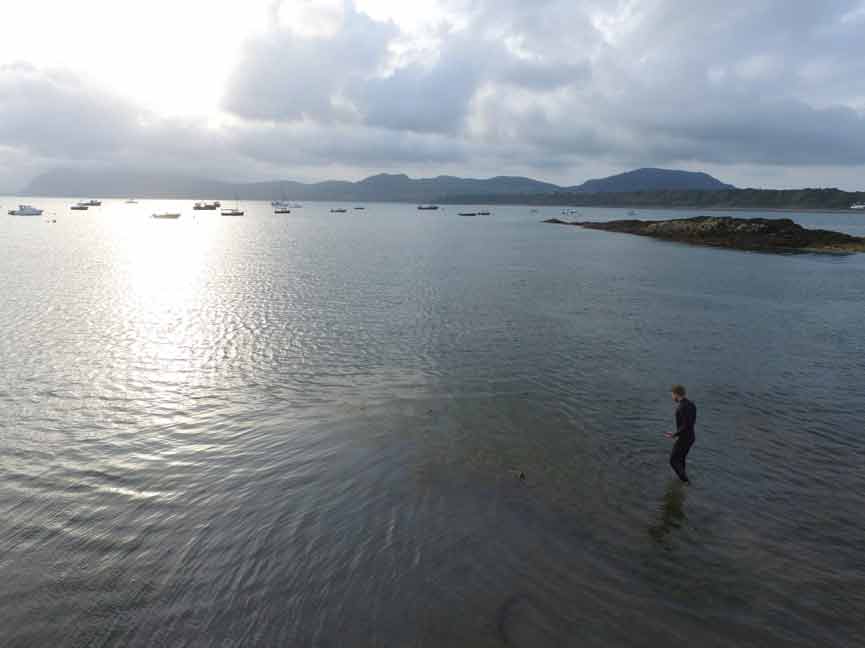
For nearly 10 years I have been teaching, writing, tweeting, speaking, blogging, presenting and workshopping pretty much around the clock, in my role as a science teacher, a diving instructor, and now presently as a Science Communicator here at Project Seagrass. I’ve learnt to use all the communication tools I can – from websites, books, and newspaper articles to photographs, videos, lectures and feature documentaries. I’ve done my level best to communicate science using kindergarten science kits, through to syllabus prescribed carbon chemistry, and through delving into the emotional narrative and philosophy that I surround climate change discourse with at the college level. Yet I still struggle with doubt that I’m not doing enough to communicate the importance of science and what science means to humanity. Principally what it means to adopt a rational, logical and Fact-Based Worldview. In this brave new world of ‘alternative-facts’ and an open war on science, and after the untimely news of the passing of a personal hero of mine Hans Rosling (a grief shared by many I’m sure), I felt it pertinent to put my stake in the ground for science. Furthermore, it was important to articulate my LOVE on Valentine’s Day – both for science (the pursuit of truth) and of course for my beloved “ugly duckling” – our disappearing seagrass meadows. Show your love for seagrass meadows this Valentine’s Day I guess this blog sort of starts with my trainee teacher year in 2007, and the need I had to learn to communicate national curriculum prescribed science to my science classes. At the time, I did my best to become a ‘good teacher’; I read up on the latest science, and I delivered the facts as I knew them to the class, making sure they would have the right information, to get the right answers come exam time. I ticked all the right boxes. All that information was important (of course!), but I did worry that by being so calm, clinical and methodical in my pedagogy, that perhaps I was implicitly sending the message that some of the more existential science we covered (global phenomena like climate change and ocean acidification) were these just more facts to learn on the way to exam success. I thought maybe the planet wasn’t in a crisis at all… After all, why else would I be so calm about it? Working as a Science Teacher is a privilege, but also a great responsibility. Perhaps another reason I struggled was because of guilt. To quote Naomi Klein; “Climate change is intergenerational theft”. Shouldn’t I be discussing how this makes my students feel? Shouldn’t I be showing more anger at the path we are choosing to follow? Shouldn’t I be doing everything in my capacity to open their eyes to these issues and encourage them to alter the course we’re taking? Luckily for me, in 2006, Al Gore released a ‘An Inconvenient Truth’, a documentary film about former United States Vice President Al Gore’s campaign to educate citizens about global warming and the science of climate change. (Quick heads up – ‘An Inconvenient Sequel: Truth to Power’ will be in theatres July 28, 2017, and whilst I am here, you should also watch Before The Flood, November 6, 2016) To quote Naomi again; “The safety and habitability of our shared home is intensely emotional terrain, triggering perfectly rational feelings of loss, fear and grief”. Yet, despite these occasional emotionally charged narratives, climate discourse is often a clinical affair, weighed down with statistics (but yes we still need them!) and political jargon. Even in the sunshine, collecting data to be made into statistics can be an unengaging affair! Unfortunately, the tone of scientific discourse often fails to capture the feeling of what we stand to lose. Casting my mind back I remember when I first watched this passage from Al Gore I cried. (video link through text); “You see that pale, blue dot? That’s us. Everything that has ever happened in all of human history, has happened on that pixel. All the triumphs and all the tragedies, all the wars all the famines, all the major advances… it’s our only home. And that is what is at stake, our ability to live on planet Earth, to have a future as a civilization. I believe this is a moral issue, it is your time to seize this issue, it is our time to rise again to secure our future.” It made me realise that sometimes we need to go beyond statistics, and harness emotions if we are to communicate a real sense of importance. Ever engaged with the humble seagrass meadow! Seagrasses have been termed the ‘ugly ducklings of marine conservation’ ecosystems and there are enormous stakes of losing these productive carbon sinks and fisheries powerhouses. I have previously written that the loss of seagrass meadows is a carbon time bomb and we have even tried to link our science to what we think people care about… “For the love of cod, let’s save our disappearing seagrass” I’ve been quoted before stating that it is the people we love and care about that depend on seagrass and have tried to phrase this in the simplest way I know how; “So many coastal fishing communities are dependent on coastal health. To put it simply, if there are no baby fish, there are no adult fish and if there are no adult fish, there is no fishing industry” I’ve even put my signature on the World Seagrass Association’s statement, and a ‘call for action’ to protect ‘the lungs of the sea’. However, despite all this, I still don’t feel that the emotion, the genuine care and passion for raising awareness of this ecosystem is getting across in my message. So, let me attempt a new tactic, one that moves beyond the statistics and the science. Let me simply declare a LOVE for the most underappreciated, unrecognised and unknown of marine ecosystems, the humble seagrass meadow. Seagrass you are Fulsnygg! Fulsnygg (Ugly-Beautiful) is Swedish, and is the feeling that somebody (or something) is attractive despite its lack of

